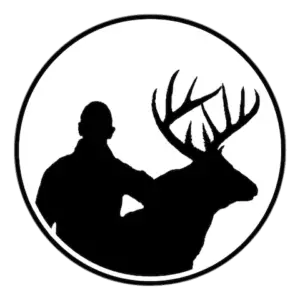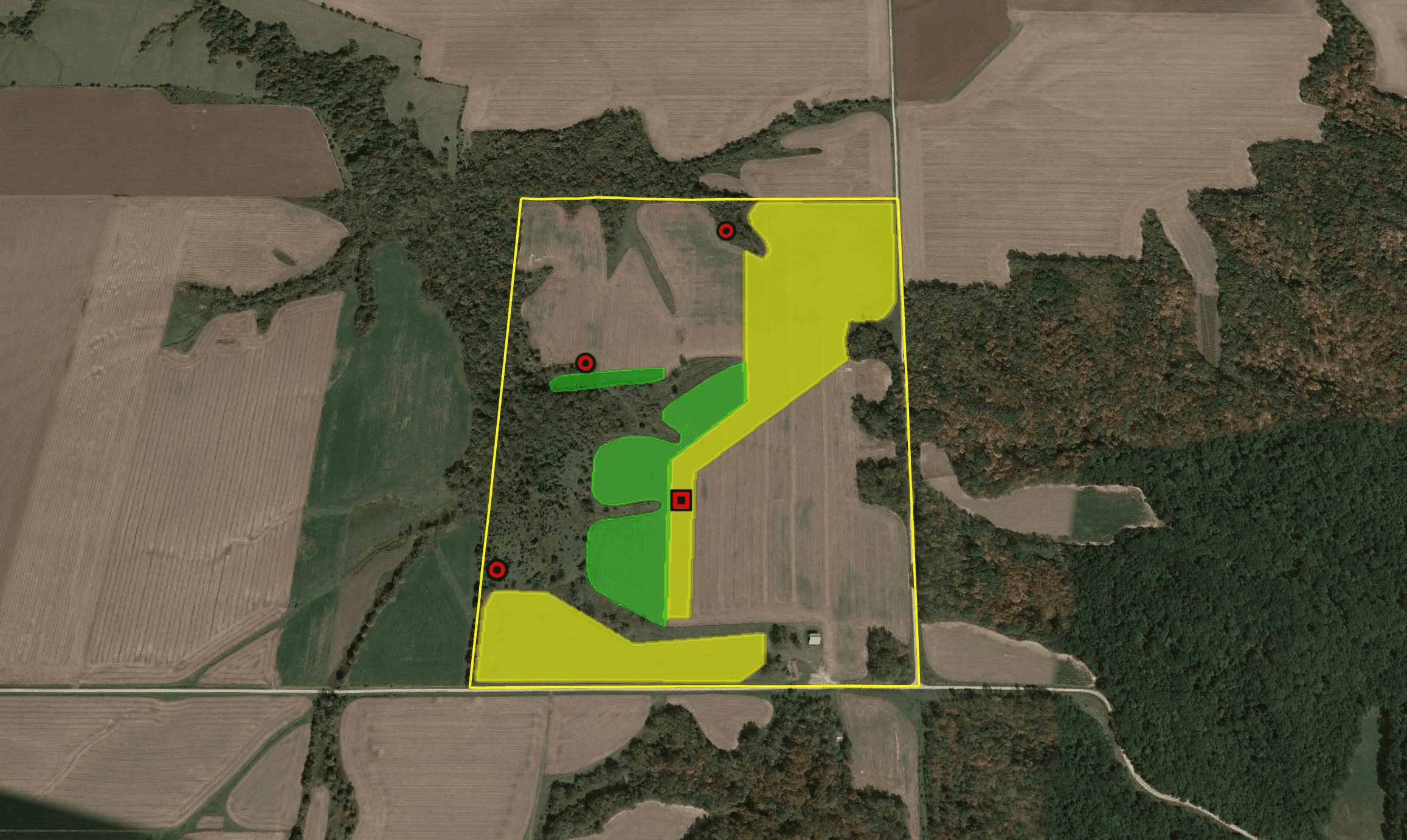I really enjoying designing deer hunting properties and thinking about where improvements should be made. Making strategic decisions to improve a property’s ability to be hunted and then seeing that success in the field is very rewarding. Bedding areas are a key ingredient to any deer hunting property design. Once you know where to put deer bedding areas, they next question you might be asking is how big a bedding area should be.
A deer bedding area should be big enough to hold both bucks and does, but not so big that you can’t hunt them effectively. Although having multiple bedding areas on a property is ideal, it’s not realistic for every property to have several different bedding areas that can maximize hunting opportunities. Every property is unique in its size, shape, neighbors, habitat, access, etc. Therefore, how a property should be set up for deer hunting to provide the best hunting opportunities will vary from property to property. A deer bedding area needs to be big enough so that deer can escape human pressure and sufficiently hide without being bothered during daylight hours.
Six considerations to think about when deciding how big your bedding area should be
1. Location of the bedding area
If you put your bedding areas in the wrong location it can negatively impact how well you can hunt the property. So, where should deer bedding areas be located on a property? Well, it depends on your specific property. I know that’s probably not the answer you want to hear, but it’s true. However, make sure you click that link and read the article because it’s goes into everything you need to think about in regards to where to put your bedding area. There’s a lot to consider when choosing the correct spot for a bedding area. Location is number one on this list of six considerations because it’s the most important.
2. Size of the property
Is your property 5 acres in size or less? If so, it’s possible that you might not want to have bedding on your property at all if there is no food in the area but plenty of bedding. Depending on the specific property and the neighborhood of that property, it’s possible that an entire 5-acre property should be planted in food.
If the property is over 100 acres, you might need to consider having several bedding area locations. However, you might only need one large bedding area. When you have one large bedding area as opposed to two, it will make it easier for you to know where to hunt on your land. The more options there are for deer to bed on your property, the harder it will be for you to predict where a specific buck might be bedded on your property. This can hurt your odds of killing a specific buck if you can’t predict where he is bedding. The goal is to find the right balance of how many bedding areas your property should have to increase your odds of holding the highest number of big bucks while also being able to effectively hunt them.
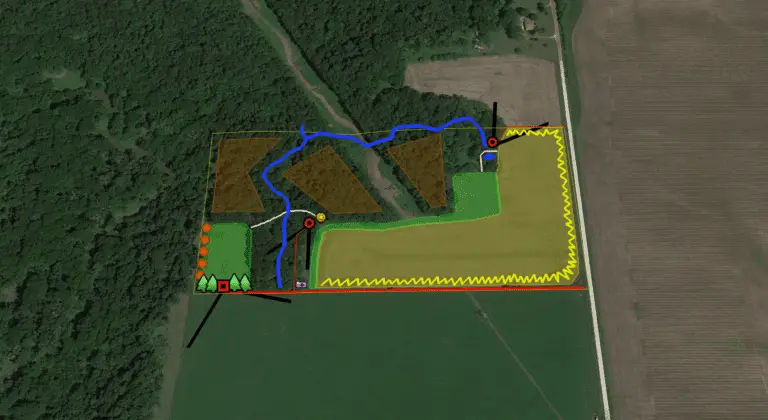
3. How a bedding area fits in with the larger picture
The third thing you should think about is how the location of your bedding area will relate to other improvements on your property and neighboring properties. For example, is your bedding area right next to your food plot(s) or do you have space in between them so that deer are forced to travel further distances on your property to get from point A to point B? Deer don’t recognize boundaries unless you have a high fence or some other barrier that they cannot cross. Therefore, you need to try and figure out how your improvements interact with the rest of the habitat within the home range of the deer using your property.
4. What kind of habitat already exists in the bedding area
Is there already bedding cover in the location where you are thinking about putting it? Perhaps you are looking to create a bedding area where there currently is no cover, like a crop field or cattle pasture. A one-acre CRP field is not going to be equal to a one-acre bedding area that’s in early successional growth. Different types of cover (hinge cuts, thick woods, cedar thickets, swamps, CRP field, etc.) offer different levels of protection and food for the deer. If you are creating new bedding areas that don’t already provide cover for deer then try to offer them a different type of cover that your neighbor isn’t providing. For example, if there are no switchgrass fields around you might want to try.
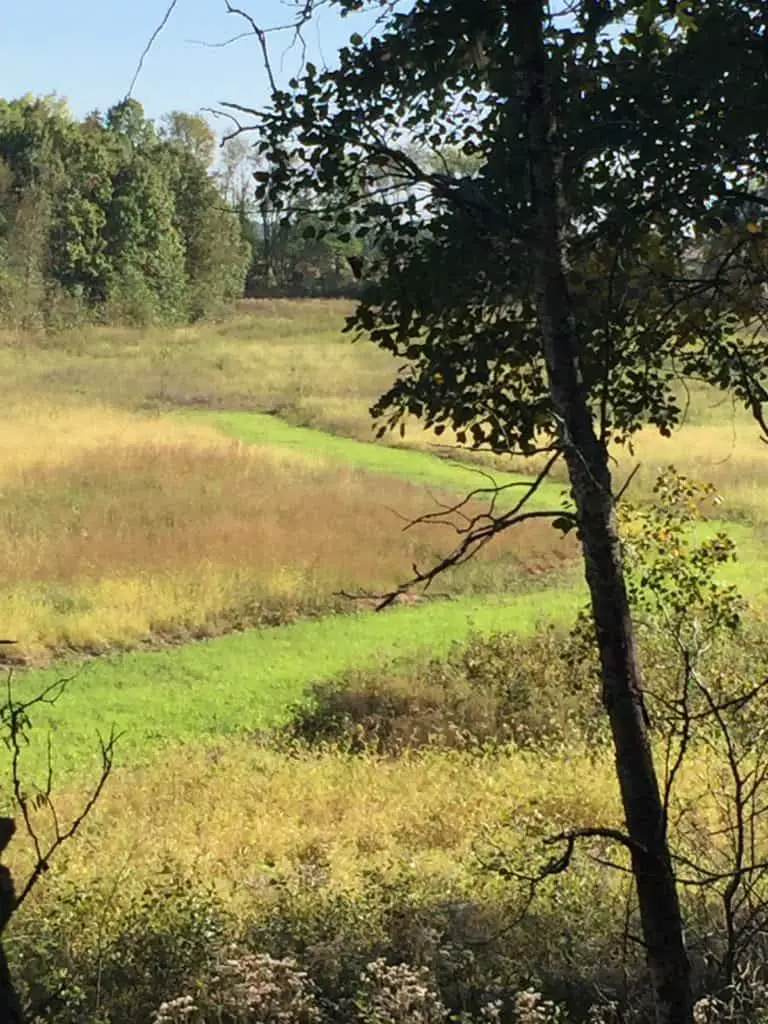
Topography
The fifth thing to think about is the topography. One acre of flat ground is going to offer less protection than one acre of choppy and hilly terrain of the same type of habitat. Mountainous topography offers more surface area for deer to bed, making a one-acre hilly area seem much bigger a than one-acre flat area.
6. How many deer do you want to hold
The sixth point is a big one which is why I saved it for last. How many deer do you want the bedroom to hold? What about mature bucks? Some people think that the bigger the bedroom the more deer you can hold. That could be true but it might not be the best decision to make if your goal is to hold the most mature bucks possible. During hunting season, mature bucks tend to get more territorial. It’s quite possible that one bedding area might only hold one mature buck. Therefore, you might want to have several bedding areas to hold multiple mature bucks.
Even though some mature bucks might need their own bedding areas and will force other mature bucks out of them, that doesn’t mean you should create a whole bunch of micro bedding areas. Let’s say you own 40 acres. Just because you label a five-acre area on a map and call it a bedding area doesn’t mean that a mature buck won’t use the rest of the 40-area property as a bedding area.
If you have multiple bedding areas on your property, there needs to be space between them. Separation of bedding areas will make it harder for a mature buck to keep an eye on more than one bedding area at a time. This will help you hold more mature bucks. Also, when you create space between multiple bedding areas you’re creating good hunting situations. Plant food plots and place your stand locations where you can effectively hunt bucks during the rut that are bouncing back and forth from bedding area to bedding area.
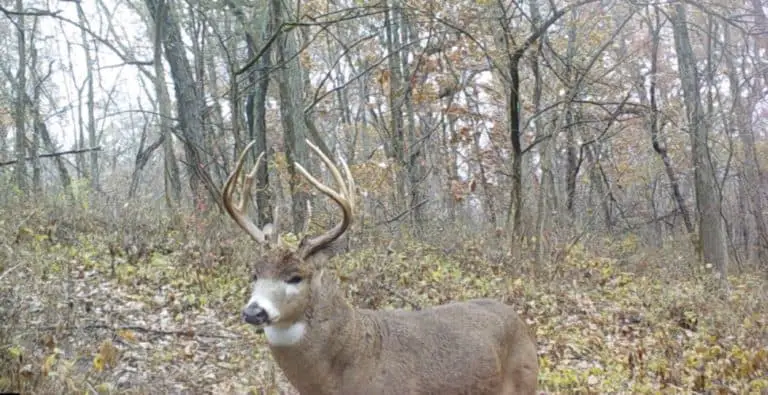
Conclusion
Designing hunting properties is a lot of fun because a good plan will help you manage the deer and create better hunting opportunities. It also increases your odds of killing the biggest bucks using your property. Make sure you put a lot of thought into the size of your deer bedding areas. The fact that you are reading this is a good first step. Unfortunately, I can’t tell you in this article exactly how big your specific bedding area should be because I would need to see a map of your property and ask you a lot of questions. Make sure you click the links to the other articles that I included on this page to make sure you are considering everything that you should before picking the size of your bedding area.
